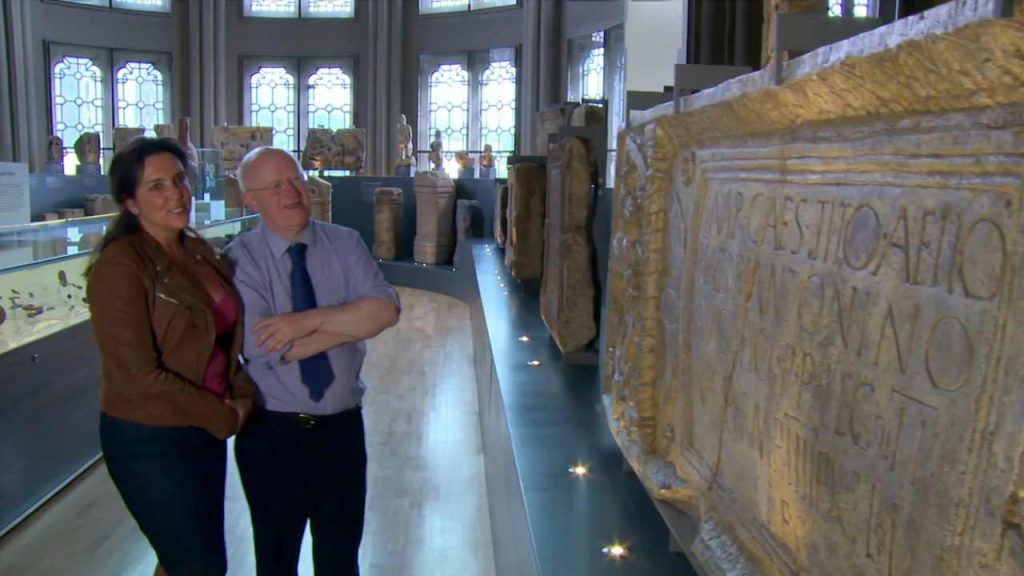Secrets from the Sky – Antonine Wall episode 6: Bettany and Ben visit the Antonine Wall in Scotland to show evidence how the Romans built the 40 mile wall, and why 20 years later it was abandoned.
Britain is full of monuments and other buildings that have historical significance, some of which are explored in an unusual way on this show. Historian Bettany Hughes and aerial archaeologist Ben Robinson explore the sites from above using camera-equipped, remote-controlled helicopters.The top-down view of the locations helps link together clues on the ground, which can have a different meaning when viewed from above, to discover the full story of the landscape. The locations that are explored via a bird’s eye view include Tintagel Castle in Cornwall, Suffolk’s Sutton Hoo cemetery and Stonehenge.
Bettany Mary Hughes is an English historian, author and broadcaster, specialising in classical history. Her published books cover classical antiquity and myth, and the history of Istanbul. She is active in efforts to encourage the teaching of the classics in UK state schools. Hughes was appointed OBE in 2019.
Secrets from the Sky – Antonine Wall episode 6
The Antonine Wall, known to the Romans as Vallum Antonini, was a turf fortification on stone foundations, built by the Romans across what is now the Central Belt of Scotland, between the Firth of Forth and the Firth of Clyde. Representing the northernmost frontier barrier of the Roman Empire, it spanned approximately 63 kilometres (39 miles) and was about 3 metres (10 feet) high and 5 metres (16 feet) wide. Lidar scans have been carried out to establish the length of the wall and the Roman distance units used.
Security was bolstered by a deep ditch on the northern side. It is thought that there was a wooden palisade on top of the turf. The barrier was the second of two “great walls” created by the Romans in Great Britain. Its ruins are less evident than those of the better-known Hadrian’s Wall to the south, primarily because the turf and wood wall has largely weathered away, unlike its stone-built southern predecessor.
Construction began in AD 142 at the order of Roman Emperor Antoninus Pius, and took about 12 years to complete. Antoninus Pius never visited Britain, whereas his predecessor Hadrian had done so. Pressure from the Caledonians may have led Antoninus to send the empire’s troops further north. The Antonine Wall was protected by 16 forts with small fortlets between them; troop movement was facilitated by a road linking all the sites known as the Military Way.
The soldiers who built the wall commemorated the construction and their struggles with the Caledonians with decorative slabs, twenty of which survive. The wall was abandoned only eight years after completion, and the garrisons relocated rearward to Hadrian’s Wall. Most of the wall and its associated fortifications have been destroyed over time, but some remains are visible. Many of these have come under the care of Historic Environment Scotland and the UNESCO World Heritage Committee.




